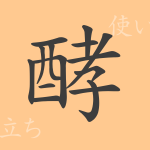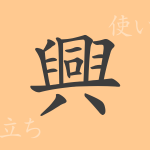In the rich world of Japanese expression, numerous kanji characters exist, each with its unique history and meaning. Among them, the kanji “稿(こう)” holds a deep cultural and historical background, playing a special role in our daily lives. This article delves into the kanji “稿(こう),” exploring its origins, meanings, usage, readings, and related idioms and expressions, to uncover the fascinating depth of this character.
Origin of 稿(こう) (Etymology)
The kanji “稿(こう)” was originally used in ancient China to refer to writing tools or books. It consists of “禾(のぎ),” meaning rice plant, and “高(たか),” meaning high. The image of tall rice plants stacked together evokes the idea of stacking written works, leading to its development as a character related to documents and manuscripts.
Meanings and Usage of 稿(こう)
The kanji “稿(こう)” primarily refers to written works such as “原稿(げんこう)” (manuscript) and “草稿(そうこう)” (draft). It also has meanings related to bundles of crops and as “稿料(こうりょう),” which refers to fees for written works. Depending on the context, it has various usages, particularly in literature and journalism.
Readings, Stroke Count, and Radical of 稿(こう)
Let’s look at the readings and structural features of the kanji “稿(こう).”
- Readings: On’yomi (音読み) is “コウ,” there is no Kun’yomi (訓読み).
- Stroke count: 15 strokes in total.
- Radical: The radical is “禾(のぎへん),” representing grains or cereals.
Idioms, Phrases, and Proverbs Using 稿(こう)
Here are some idioms and phrases that include “稿(こう).”
- 投稿(とうこう) – The act of submitting articles or opinions to magazines, newspapers, or websites for publication.
- 原稿(げんこう) – A manuscript or document written for printing or publication.
- 草稿(そうこう) – A draft or preliminary version of a text or drawing.
- 清稿(せいこう) – A finalized, polished manuscript after revisions and proofreading.
- 謄稿(とうこう) – The act of copying a document, or the copied document itself.
Conclusion on 稿(こう)
The kanji “稿(こう)” represents concepts related to written works and documents, playing a crucial role in our communication and culture. Through this character, we can reappreciate the value of writing and the importance of sharing information. As a common kanji in everyday Japanese, “稿(こう)” teaches us about the beauty and depth of language while being intricately linked to our daily lives. This exploration has provided a deeper understanding of the multifaceted charm of “稿(こう).”

























